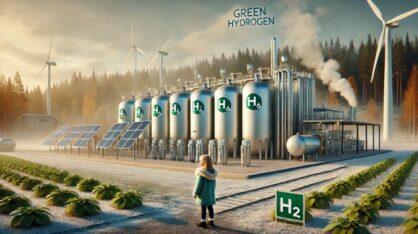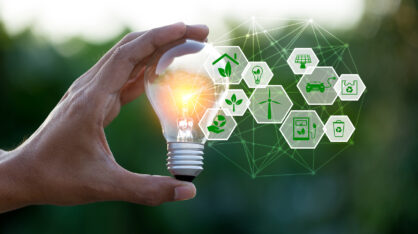Why hydrogen is important?
Hydrogen (H2) is an attractive alternative fuel in various sectors such as industries, transportation, and residential usage as it has an abundant supply potential, contains more than three times energy content per weight of traditional gasoline and it does not produce carbon dioxide (CO2) from combustion (Goldmann et al., 2018; Dahal et al., 2021). Hydrogen is also a preferred fuel for vehicle and aircraft power systems based on fuel cells. The combustion of hydrogen in vehicle engines does not produce any harmful pollutants except nitrogen oxides (NOX) emissions (Cecere et al., 2014). Thus, the use of hydrogen helps to reduce emissions significantly. Hydrogen is the lightest among all molecules and rises in the free atmosphere, which reduces the danger associated with accidental leakages (Dahal et al., 2021).

Hydrogen production methods and technologies
Hydrogen can be produced via gasification of coal, natural gas, and biomass, followed by reforming of synthetic gas (syngas) and electrolysis of water (Dahal et al., 2021; Saha et al., 2023). If hydrogen is produced from natural gas and coal, it is called grey hydrogen, and CO2 produced in the production process is emitted to the atmosphere (Richel, A. (n.d.); Saha et al., 2023). If the produced CO2 is captured at the production facility, stored separately, and reused in the production processes, the hydrogen produced with this method is called blue hydrogen (Richel, A. (n.d.); Saha et al., 2023). The most sustainable way of producing hydrogen is through the electrolysis of water in which hydrogen and oxygen molecules are separated by applying electrical energy to the water. The used electricity is generated from renewable sources such as wind, solar, and hydropower. The produced hydrogen is called green hydrogen (Richel, A. (n.d.); Saha et al, 2023). The electrolysers are the main technologies required for the electrolysis of water. The most common electrolysers used in the electrolysis process are alkaline electrolysers (AELs), but proton exchange membrane (PEM) electrolysers and solid oxide electrolyser cells (SOECs) are also under development and will be dominantly used in the future (Gallandat et al., 2017; Dahal et al., 2021). The demand for green hydrogen is for the decarbonization of the energy system.

Challenges for the adoption of green hydrogen
However, infrastructure required for storage and transportation of hydrogen is challenging. Hydrogen should be transported either in liquid or compressed form for which further steps of technologies are required which is energy consuming and costly as well. The volumetric energy and the density of hydrogen is way lower than other alternative fuels which is challenging for the storage of hydrogen (Goldmann et al., 2018; . However, the density of liquid hydrogen (LH2) is two times greater than for compressed gaseous hydrogen at 700 bars. Thus, LH2 is frequently considered the prime candidate for hydrogen storage. However, due to the low density of LH2, large size of LH2 tank is required which should also be appropriate to eradicate hydrogen embrittlement (Dahal et al., 2021).
At the moment, the cost of green hydrogen production is several times higher than the cost of grey hydrogen production and technology advancement for green hydrogen production has not yet reached a high efficiency level (Dahal et al., 2021; Saha et al., 2023). However, rapid technology development is taking place and the demand for green hydrogen will skyrocket in the coming years due to several reasons, including the European and global energy crises and the war in Ukraine, pushing the markets for Russian free energy transformation in Europe. The European Union (EU) has ambition to scale up renewable hydrogen projects and invest a cumulative amount of 470 billion euros by 2050 (European Commission, 2020). Several European countries have already adopted a clear hydrogen strategy to become energy independent and reduce emissions from the energy sector. Therefore, smart solutions will be crucial for a rapid transition from fossil fuels to green hydrogen and accelerating the transition.
In addition, due to the emerging adoption of green hydrogen production and its application at large scale, the workforce will require related knowledge and skills building for future needs, including the re-skilling of the existing energy sector workforce. For instance, such skills and knowledge building programmes include education and training for green energy production (e.g., electrolyser maintenance and industrialization), storage and compression, and fuel cell and hydrogen-based applications. At the moment, there is a limited specialized workforce in the sector.
Emergence of H2Excellence project
To bridge this knowledge and skills gap as well as expand and promote hydrogen and fuel cell technologies in the EU and internationally, the H2Excellence project has just been initiated. The full title of ‘H2Excellence’ is ‘Fuel cells and green hydrogen centres of vocational excellence towards affordable, secure, and sustainable energy for Europe’. It is funded by the Centre of Vocational Excellence (COVE) in the Erasmus+ programme of the EU with a total budget of about four million euros, and it will run for four years from June 2023 to June 2027. H2Excellence Consortium has 24 partners representing vocational education training (VET) providers, research institutes, universities, companies, and governmental organizations from nine Erasmus+ countries (Finland, Portugal, France, Germany, Poland, Italy, Spain, Germany, and Romania) and an international partner from North America (Canada). The project is coordinated by Vaasa University of Applied Sciences (VAMK).
In this project, we will establish the H2Excellence Platform of Vocational Excellence which will create and implement lifelong learning opportunities and develop international curricula. We will mainly establish several local clusters, i.e., Centres of Vocational Excellence (CoVEs), fully integrated into the innovation, skills, and job ecosystem in green hydrogen and fuel cell technologies in six Erasmus+ countries (Italy, Spain, Finland, Portugal, Poland, and France) and two support/associated CoVEs in the other two Erasmus+ countries (France and Poland). We will continuously expand our networks within the respective regions and countries in Europe and internationally.
Kick-of meeting for the H2Excellence project
The kick-off meeting for the H2Excellence project took place at the Vaasa Innovation Centre and the Scandic Hotel Waksia in Vaasa on September 11–12, 2023. The meeting was also organized online in Teams. A total of 45 participants from 21 partner organizations took part in the meeting. As extra activities, all participants visited ‘The Kvarken Archipelago’, a World Heritage Site, where dinner and sauna bathing were organized at Kalle’s Inn Resort. The participants were welcomed by Niklas Ulfvens and Kaisa Penttilä from the Ostrobothnia Regional Council.
This article is written as a part of the project “H2Excellence Project” and financed by the Erasmus+ programme of the European Union (EU). Views and opinions expressed are solely of the author and do not necessarily reflect views of the EU and Erasmus+.




